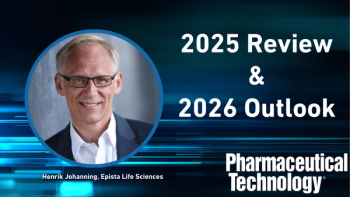
Collaboration Formed to Develop Large-Scale Bioreactor Production of Stem Cells
EMD Millipore and PharmaCell have entered into a collaboration to develop optimized large-scale expansion and harvest of HepaRG cells using bioreactor technology.
As stem-cell therapies progress from the R&D stage into clinical testing and ultimately commercialization, the need for reliable and consistent bioreactor technology for the production of these fragile cells has become more pressing. Currently, most stem cells are produced using multilayer culture flasks, but there are limitations with these systems when it comes to large-scale production.
The BALANCE project, which is funded by the Seventh Framework Program of the European Commission, the companies Hep-Art, Pharmacell, and BioPredic, along with the Amsterdam Medical Center and the University of Edinburgh, aims to develop bioartificial livers that will provide patients with acute liver failure (ALF) a liver-support system while they are waiting for a liver transplant or recovery. To do so, the companies will need access to large numbers of hepatic cells known as HepaRG cells.
In April 2013, EMD Millipore and Pharmacell entered into a collaboration to develop optimized large-scale expansion and harvest of HepaRG cells using bioreactor technology. These hepatic progenitor cells will be used to support the BALANCE project. Robert Shaw, commercial director of EMD Millipore's Stem Cell Initiative and Alexander Vos, CEO of PharmaCell, spoke with Cynthia Challener, editor of the Pharmaceutical Sciences, Manufacturing & Marketplace Report, about the drivers for the development of HepaRG cells, the goals of the BALANCE project, what each firm brings to the collaboration, and the technical hurdles they face with respect to the large-scale production of stem cells in single-use bioreactors.
Treatment needed for severe liver diseasePharmaceutical Sciences, Manufacturing and Marketplace Report: What is driving the interest in HepaRG cells?
Vos (Pharmacell): HepaRG cells are a unique cell line that was isolated from the liver some time ago. Initially developed as a model for studying the hepatitis virus in culture, the cells demonstrate many of the properties of human liver cells (hepatocytes). These cells are being investigated by the BALANCE Consortium as a means to produce an artificial liver. That is, to use large numbers of HepaRG cells to perform many of the functions of a liver. Such an artificial liver would be used in a device designed for patients with failing livers or who need help in maintaining liver function.
Scalable expansion required
Pharmaceutical Sciences, Manufacturing and Marketplace Report: What are the expected deliverables for the BALANCE project?
Shaw (EMD Millipore): The project is expected to deliver scalable expansion for the production of large-scale cell therapies, which is necessary for advancement into human clinical trials and to deliver these quantities efficiently and effectively. To be able to deliver a consistent and reproducible supply of cells, further progress in the areas of cell culture and scale-up, characterization, enrichment, and purification are required.
Combining microcarrier and human cell culture technologies
Pharmaceutical Sciences, Manufacturing and Marketplace Report: What expertise/capabilities does each company bring to the collaboration?
Shaw (EMD Millipore): EMD Millipore brings specific knowledge in the area of microcarrier-based cell culture, bioreactor growth of microcarrier cultures, and the scale-up and handling of large volumes of cells. EMD Millipore is helping Pharmacell develop a method to produce the very large numbers of cells (tens of billions) that are needed to generate such an artificial liver. Bioreactors have already been delivered to Pharmacell, and cell culture is underway to develop the process. Much communication by phone and email is needed to help work out all of the technical details between the two companies.
PharmaCell provides GMP contract manufacturing services and process-development solutions in the area of cell therapy and regenerative medicine. For this project focused on HepaRG cells, PharmaCell’s advanced know-how in culturing human cells under GMP conditions is vitally important.
Finding the optimal conditions
Pharmaceutical Sciences, Manufacturing and Marketplace Report: What are the critical challenges/hurdles that must be overcome in order for the goals of the project to be met?
Shaw (EMD Millipore): As more cell-based therapeutics progress towards clinical testing, the consistency, quality, and reproducibility of large-scale culture systems become an imperative. The ability to ensure that a population of cells can be reproducibly produced in a manner that can be validated is critical to the success of clinical applications. The technologies developed as part of this collaboration will help enable such consistent production and move the field forward.
The first challenge was the screening of microcarriers in order to select the right surface for the cells to grow on. The selection process involved the use of both static cultures and small-scale dynamic cultures in spinner flasks. Next, mixing studies with the bioreactors were initiated in order to determine the optimal mixing conditions for the microcarriers. The major challenge remains in translating the relevant parameters for microcarrier culture (shear stress and oxygenation) from small spinner flasks (approximately 125 milliliters) to the big media volumes used in the bioreactors (3-200 liters) without affecting the potency of the HepaRG cells. The optimal cell number per microcarrier for attachment and the best feeding and control strategies for the large vessels must be determined. Finally, protocols to harvest (release the HepaRG cells from the microcarrier surface) and separate the detached cells from the carriers must also be developed.
Platform technology
Pharmaceutical Sciences, Manufacturing and Marketplace Report: What other applications might the new technology that is developed during the collaboration be used for?
Shaw (EMD Millipore): The advantage of using microcarriers and bioreactors is that this technology can be applied to any adherent cell line. Although the specific cells from each line may require different microcarriers, the attachment, growth conditions, etc, used in the general approach remain the same. Therefore, the approach becomes a platform technology that can be used with many other cell types.
Newsletter
Get the essential updates shaping the future of pharma manufacturing and compliance—subscribe today to Pharmaceutical Technology and never miss a breakthrough.




